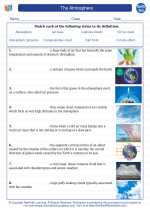Families
A family is a fundamental unit of society and is defined as a group of people related by blood, marriage, or adoption. Families play a crucial role in shaping the values, beliefs, and behaviors of individuals and are the primary source of emotional and social support.
Types of Families
- Nuclear Family: This type of family includes two parents and their biological or adopted children.
- Extended Family: In an extended family, relatives such as grandparents, aunts, uncles, and cousins live in close proximity or maintain regular contact.
- Single-Parent Family: This family structure consists of one parent raising one or more children.
- Blended Family: A blended family is formed when two people get married or cohabit and bring children from previous relationships into the new family unit.
- Childless Family: A family without children, either by choice or due to infertility.
- Adoptive Family: Families that have legally adopted one or more children.
Roles and Responsibilities
Within a family, each member may have specific roles and responsibilities. These could include:
- Parental Roles: Providing emotional support, guidance, and discipline to children, as well as meeting their physical and emotional needs.
- Child Roles: Following rules, contributing to household chores, and respecting other family members.
- Sibling Roles: Supporting and respecting each other, sharing responsibilities, and fostering positive relationships.
Functions of Families
Families serve several important functions in society, including:
- Emotional Support: Providing love, comfort, and encouragement to family members.
- Financial Support: Meeting the economic needs of the family, such as housing, food, and education.
- Socialization: Teaching children the values, norms, and behaviors of the society in which they live.
- Protection: Ensuring the safety and well-being of family members.
- Reproduction and Child-rearing: Continuing the family lineage and raising the next generation.
Studying Families
When studying families, it is important to consider various aspects, such as:
- Sociological Perspective: Understanding how families function within the larger society and the impact of social, cultural, and economic factors on family dynamics.
- Psychological Perspective: Exploring the emotional and cognitive development of individuals within the family unit, as well as the impact of family dynamics on mental health.
- Anthropological Perspective: Examining the cultural variations in family structures and the role of families in transmitting cultural traditions.
- Historical Perspective: Tracing the evolution of family structures and dynamics over time and across different societies.
Understanding the complexities of families from diverse perspectives can provide valuable insights into the functioning and significance of this fundamental social institution.
It is also important to recognize that family structures and dynamics can vary widely across different cultures and societies. This diversity enriches our understanding of human relationships and the role of families in shaping individuals and communities.
Studying families helps us appreciate the diverse ways in which people form and maintain meaningful connections, navigate challenges, and contribute to the fabric of society.
By understanding the roles, functions, and complexities of families, we gain a deeper appreciation for the significance of this fundamental social institution.
.◂Earth Science Worksheets and Study Guides High School. The Atmosphere

 Worksheet/Answer key
Worksheet/Answer key
 Worksheet/Answer key
Worksheet/Answer key
 Vocabulary/Answer key
Vocabulary/Answer key
 Vocabulary/Answer key
Vocabulary/Answer key
 Vocabulary/Answer key
Vocabulary/Answer key
